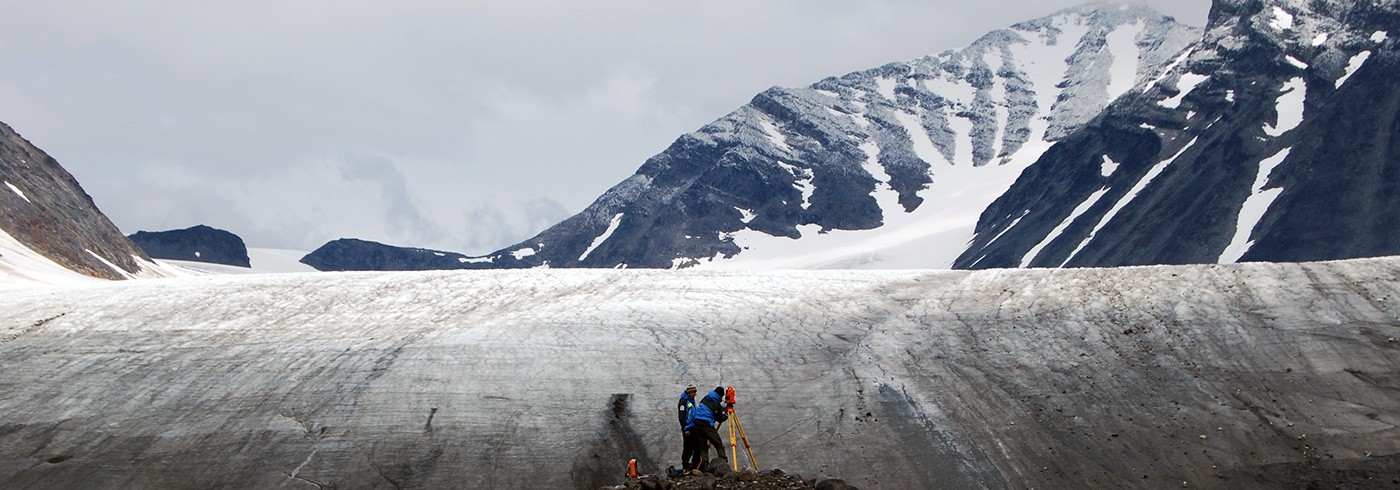The research projects involved in Arctic Sweden had largely to do with climate change, both natural changes and those attributable to man. The projects were interdisciplinary in nature, and addressed issues in which time was clearly an important factor. For instance, earlier research areas was revisited to study any changes in relation to historical scientific documentation, and modern research methods was applied in these areas and to older research data.
The research was divided into four themes:
Theme I – Effects of climate on glacier development
Theme II – Relationships between plants and animals in the mountain tundra environment, and connections to historical human use of such areas
Theme III – The effects of climate change on the sensitive ecosystems in the mountain range
Theme IV – Changes over time in the presence of animals, human utilisation of natural resources and geological processes will be studied using modern geo-chemical methods.
From Helags to Treriksröset
The research activities was conducted in the Swedish mountain range extending from Härjedalen to Lapland in July and August 2008. The Vindelfjällen Research Station is located in Ammarnäs. The station and village served as the starting point for numerous inventories and specimencollecting expeditions from Tärnafjällen in the south to Björkfjället in the north. A base camp was also established for about three weeks during Artic Sweden at Lake Luspasjaure, which lies on the border between Norrbotten and Västerbotten, for archaeological excavations and data-gathering for studies of plant and animal life.
The Abisko Scientific Research Station is located in Abisko near Lake Torneträsk. The station served as the starting point for advanced research in its environs, and offered laboratories and workrooms. In-field communication solutions and coordinated helicopter transports created links to the station’s satellite stations and other mountain areas, thus making the Torneträsk area a unified and consolidated area for research purposes. The field activities during the summer of 2008 built in part upon the research coordination already established in projects such as Back to the Future and ENVISNAR.
A small field camp served as a movable research platform, with each campsite providing a jumping-off point for specimen collection and research work in its vicinity, with helicopter support. This approach made it possible to inventory large areas in a short time, and allowed the researchers to reach relatively remote locations quickly.
The Swedish Polar Research Secretariat’s contribution consisted of planning and coordinating the research, helicopter support, field camps, communication solutions and outreach activities.
Principal investigators
Gunhild Rosqvist
Stockholm University
Göran Ericsson
SLU Umeå
Terry Callaghan
Abisko Scientific Research Station
Magnus Mörth
Stockholm University

Map showing Arctic Sweden.







